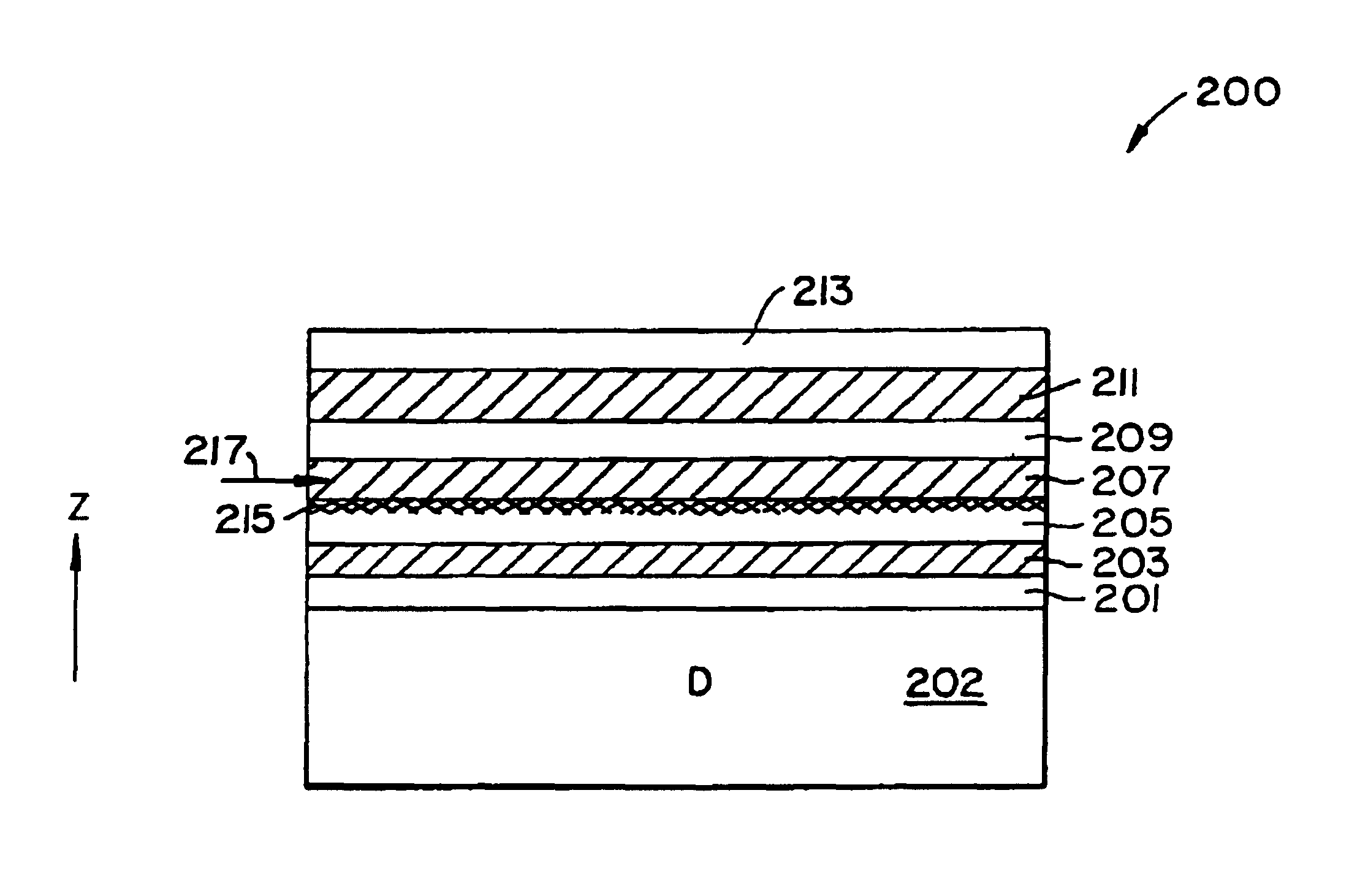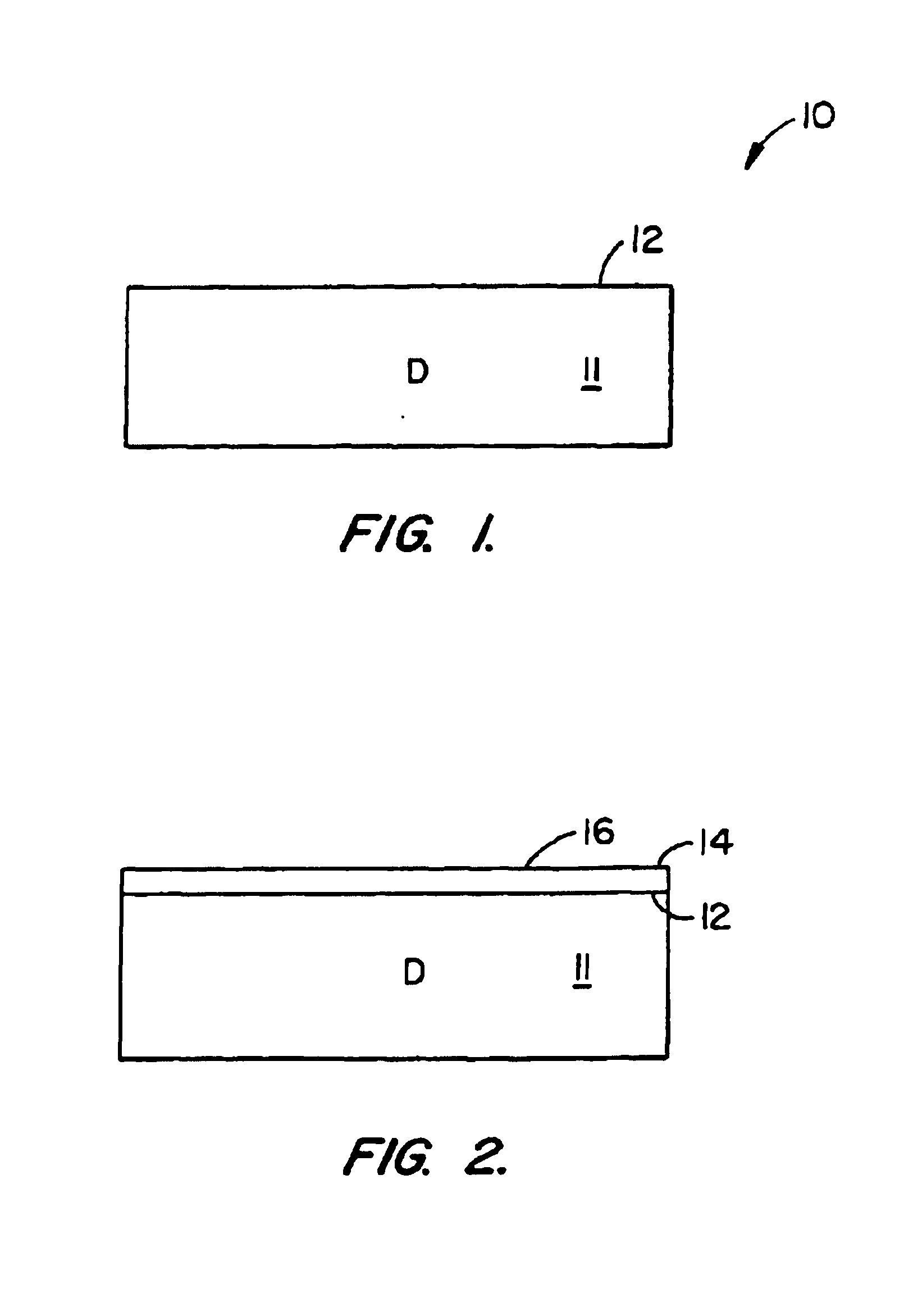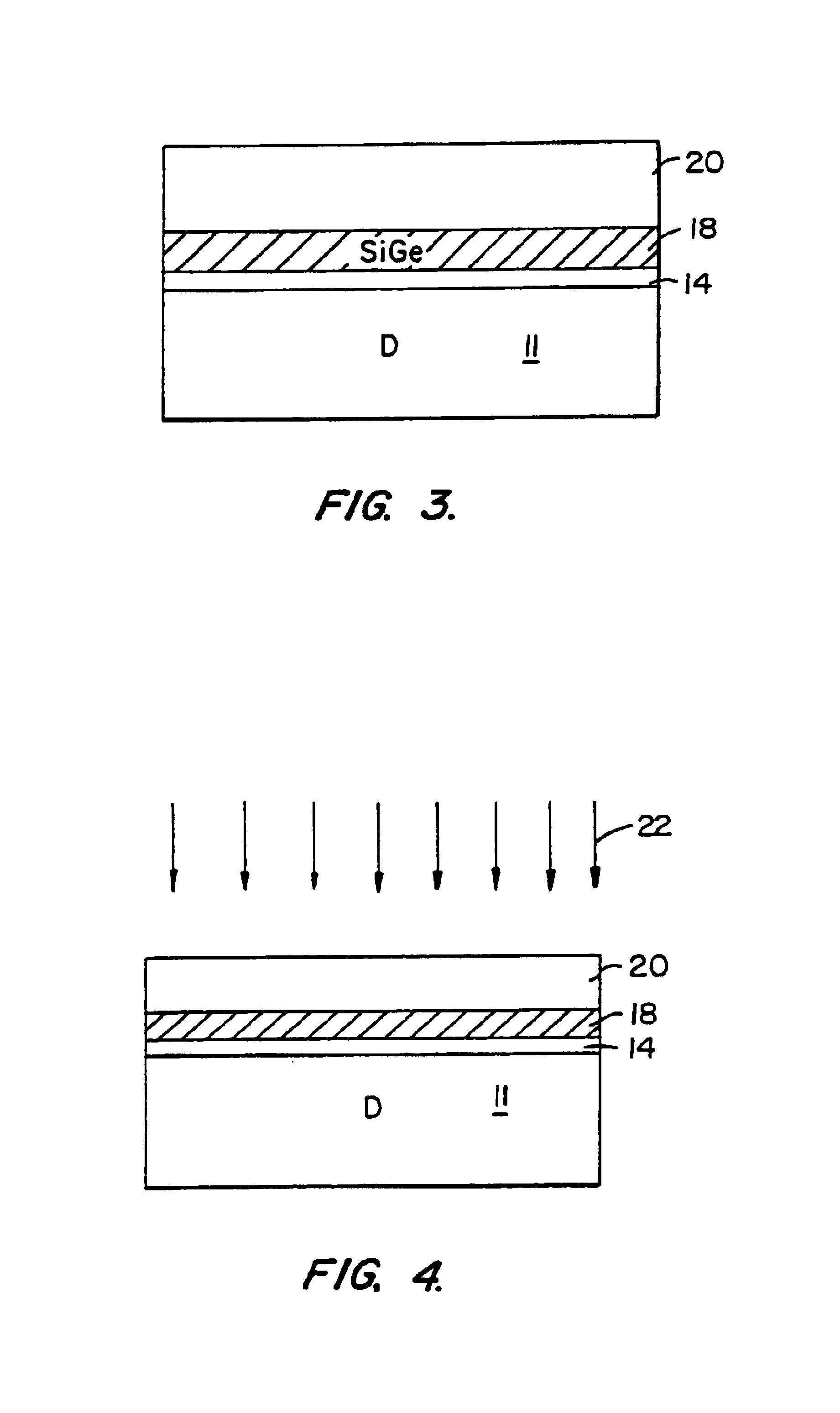Cleaving process to fabricate multilayered substrates using low implantation doses
a technology of implantation dose and fabrication process, which is applied in the field of manufacturing objects, can solve the problems of difficult high implantation cost, and difficulty in efficient production of simox wafers, and achieve the effect of improving film quality and efficiency
- Summary
- Abstract
- Description
- Claims
- Application Information
AI Technical Summary
Benefits of technology
Problems solved by technology
Method used
Image
Examples
example
[0052]To prove the principle and operation of the present invention, an experiment was performed. In this experiment, we used eight-inch bulk CZ wafers. These wafers were prime low boron concentration wafers from Mitsubishi Silicon America. The wafers were cleaned using a conventional SC1 and SC2 clean. Next, the wafers were dried using a conventional spin rinse dry so that the wafers were free from liquid droplets. Each wafer was loaded into an epitaxial silicon reactor. The reactor was a tool made by ASM International of Phoenix, Arizona, but is not limited to such reactor. A high temperature bake at about 1,100 Celsius was performed on the wafer. This bake removed native oxide and cleaned faces of the wafer. The bake was followed by a deposition process, where about 2,000 Angstroms of epitaxial silicon was deposited.
[0053]Such deposition was provided by a combination of silane and hydrogen gases in a conventional manner.
[0054]Next, the method used a deposition of silicon germaniu...
PUM
 Login to View More
Login to View More Abstract
Description
Claims
Application Information
 Login to View More
Login to View More - R&D
- Intellectual Property
- Life Sciences
- Materials
- Tech Scout
- Unparalleled Data Quality
- Higher Quality Content
- 60% Fewer Hallucinations
Browse by: Latest US Patents, China's latest patents, Technical Efficacy Thesaurus, Application Domain, Technology Topic, Popular Technical Reports.
© 2025 PatSnap. All rights reserved.Legal|Privacy policy|Modern Slavery Act Transparency Statement|Sitemap|About US| Contact US: help@patsnap.com



